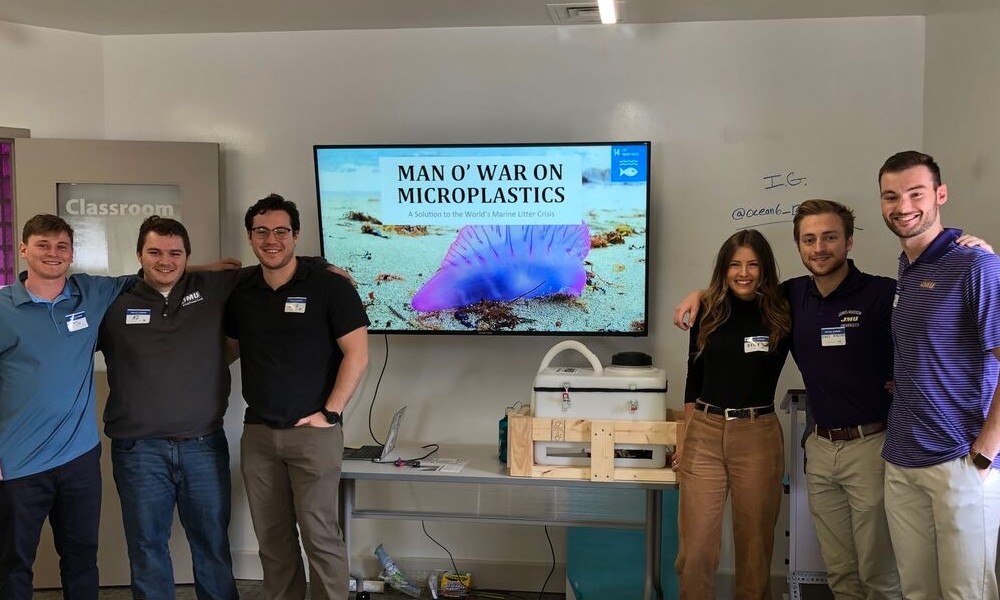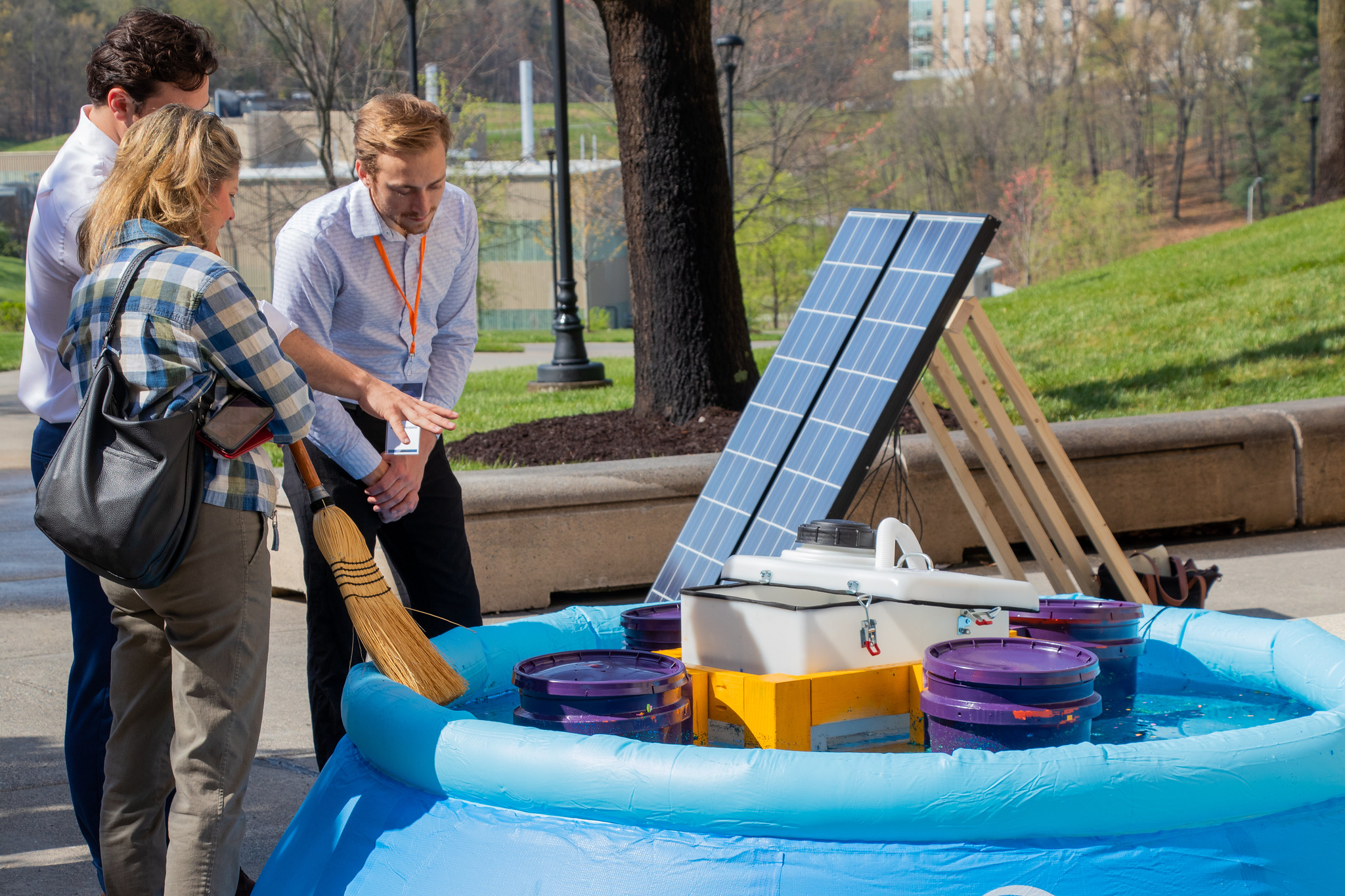Engineering students work to fight against litter crisis
News
SUMMARY: Engineering students embark on a fight against the world’s litter crisis, to learn about biomimicry and how they can help to clean up the world's oceans.
By Meghan Long, CISE student writer
Every week, the average human consumes around five grams of microplastics — an amount equal to the weight of a credit card. Our oceans are littered with these microplastics. However, they are minuscule plastic fragments, often too small to be visible to the human eye.
Senior Engineering students AJ Smith, Gage Waltner, Jeremy Lunn, Kelly Riggan, Wesley Quill, and Zack Mountjoy joined together during their junior year to embark on a fight against the world’s litter crisis, to learn about biomimicry and how they can help to clean up the world's oceans.
The capstone team planned to compete in the Biomimicry Global Design Challenge. However, the challenge, which operated for six years and supported nearly 5,000 participants, was discontinued after the students' junior year. But the team remained motivated to see their work through. "We are doing the project now because we are passionate about it," says Wesley Quill. By following the competition guidelines, the group chose the topic of reducing the amount of plastic in the world's oceans. "We knew we had two years to do it. So we focused on making this design from scratch and seeing it to completion," explains Quill.
The team's work focused on developing a robust understanding of biomimicry, which is the process of taking inspiration from nature as a model for human inventions. Their inspiration — the Portuguese Man o' War.
Engineering professor Jacquelyn Nagel, who has mentored the team since its inception, explains the group's decision to choose the Man o' War. "The inspiration the team gets from the Man o' War is the way it does filter feeding. It glides along the top of the water, and its tentacles spread out to grab different food sources," she explains. "The team's system essentially mimics how the Man o' War eats, except the system is collecting microplastics."
The students' design consists of a solar panel that charges a battery to power a pump and tube system—extracting water and microplastics from the waterway. Inside the system are two-layered filters that filter out microplastics. A buoyancy system and anchor allow the design to stay at the most effective location and depth.

Nagel notes how the students have become biomimicry ambassadors. "They have worked hard to help people understand biomimicry and the undeniable benefits that come with it," she explains. "Throughout the two years, there has been a lot of converging and diverging—but they've remained focused on their project the entire time," she says. As a result, the students shared their work and knowledge about biomimicry at the Sustainability Summit in Staunton, VA.
The team explains the valuable working relationship they developed with Nagel throughout the project. "From the beginning, she helped give structure to the project. She pushed us to select a topic that everyone on the team would be passionate about and something that could be realistically achievable over two years. She's pushed us to be successful and stay on track," says Quill.
As their eyes have been opened to the harm caused by microplastics in the water, and their understanding of biomimicry has grown, the team says they have become "morally connected" to the project. "This was not something we could just give up on once the competition was discontinued," Quill explains.
In 2021, their capstone project won the "Peoples Choice Award" - voted by their peers as the favorite capstone project. "It's motivating to know that others are impacted by our work and found our project interesting," says Quill.
The group is also involved in sharing their knowledge and passion for environmental sustainability within the community. Last year, the team participated in the annual Blacks Run Clean-Up Day. They were part of a group of 200 volunteers who gathered 2.5 tons of refuse. The event was one of their favorite memories of their time together—noting the unique opportunity to gather outside the classroom and share their passion for the environment.
The capstone team hopes their project and work in the community continues to inspire others to be more mindful of their environment. "Personally, our work has reframed how I think about the world around me," Quill says.
